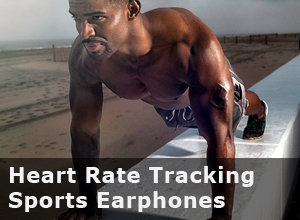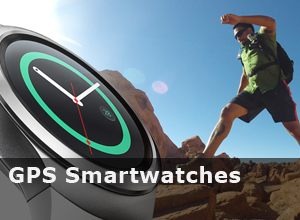Despite new entries to the market, the Fitbit Flex and Garmin Vivofit are still two of the best-selling fitness trackers.
After spending a week with each of them, which one did I decide to keep?
In the Box
Both fitness band packages come with two bands, one large and one small, so you don’t need to worry about them not fitting you, unless you have abnormally sized wrists. They both come with USB Bluetooth dongles so you can sync them to your computer, in case it doesn’t already Bluetooth-enabled. There are a few instructions in the box but most of them are online. As the Vivofit battery is like a traditional watch battery, only needing to be replaced every year or so, it doesn’t come with a charger. The Fitbit Flex comes with a USB charging cable.

Comfort
For Gym work, such as treadmill, rowing machine, push ups, ab curls, weights etc neither of the two bands bothered me at all. The Vivofit is slightly bulkier and heavier than the Flex, the difference in comfort is marginal, but the Flex wins. The same applies to wearing the bands overnight, none of them bothered me at all, but if there was a winner it was the Fitbit Flex.

Look
In terms of design, it doesn’t get much more minimalist than the Fitbit Flex. The Vivofit is nothing flash either but looks like it actually performs some type of function. Some people would rather disguise their wearable and prefer the flex as it really doesn’t look like anything more than a rubber band on your wrist. I have no problem with someone looking at my wrist and seeing that I have wearable technology wrapped around it, yes, I am proud of my wearable! So for me, the Garmin Vivofit wins the battle of looks.

User Friendly
If you’re not accustomed to fitness trackers, you should have no problem setting up either the Flex or the Vivofit. The Vivofit comes out of the box ready to use with a fully charged battery with a 1 year+ lifespan, so as soon as you hook it up to the app you can start using it. The Fitbit Flex needs to be charged past 60% before use, after unboxing it I needed to charge it for about 30 minutes.
It’s all straight forward installing the apps, creating accounts and syncing the bands. To sync the Vivofit to your phone you press a button on the side of the band. The Fitbit Flex requires you to tap on the band a few times to confirm which band you’re syncing. Both similar, but I would edge towards the Garmin Vivofit being slightly easier to set up and pair up.

Apps
The apps for both the Vivofit and the Flex sync to the bands via Bluetooth. They both run on iOS, Android and Windows phones, and PC’s and Mac’s. In case your computer doesn’t have Bluetooth, both bands come with a USB Bluetooth dongle.
I said that the Garmin was a little easier to set up, quicker because you don’t have to charge the battery up first, but some of this time advantage gets eaten up because if you want to log your calories you will need to create another account with MyFitnessPal, this is because the Vivofit app ‘Garmin Connect’ only counts calories burnt, and doesn’t let you log down what you’re eating! Once you have set up accounts for Garmin Connect and MyFitnessPal, you can link them together and it works well.

Garmin
However, the Fitbit app does the lot, so you only need to create one account. It has a bar code scanner to save you manually inputting what you’ve eaten, but I don’t eat much packet food so it is no use to me. Fitbit devices now work with the popular fitness app Strava.
Both apps have a user community who you can interact with, and you have the option with both bands to use other third-party apps. The Fitbit app gives you more features and analysis than Garmin Connect (unless you’re using a GPS device), so the Flex wins the app battle.

Fitbit
Accuracy
It is difficult to say which one of the bands is more accurate. I’m pretty sure they both over-estimate calories burned, because according to them I should be the skinniest guy on the street, which I’m not. They do inlude your baseline calories (BMR), which is the number of calories your body needs to sustain regular body functions, such as breathing. BMR doesn’t include any exercise that you do throughout the day, and is dependent on age, height, weight, gender, and other factors. This is why your calories burnt increases while you’re not moving.
I found them both as accurate as each other in terms of miles covered, I do a walk pretty much everyday with my pooches, according to the GPS on my Galaxy Ace 4, the walk is 2.1 miles, both the Fitbit Flex and Garmin Vivofit clock the walk at 2.1 miles, which I was rather impressed with. If I was running instead of walking, they might not have been so accurate.
I haven’t been using the Vivofit with the heart rate chestband, if you do use it, you will get more accurate data about your calories burned. For sleep tracking, both bands will tell you how much you moved around in the night and at what times, It’s difficult to say how accurately when you’re asleep,,, Doh!
Features and Usability
Both devices track steps taken, distance traveled, active minutes, calories burnt, hours slept, and sleep quality.
Apart from 5 flashing LED’s, the Fitbit Flex displays no data, all of the readings have to be taken from your smartphone. The LED’s on the Flex are quite cool, you double tap on the band and they will give you a neat little display of how much of your daily goal you’ve achieved, each of the 5 LED’s represents 20% of your goal completed. The Fitbit Flex has a vibration feature, which is a more pleasant way of being woke up in the morning than noise in the ear.
The Garmin Vivofit has a display on the band which tells the time, date and your fitness stats, it also has a (red) move bar which grows in length when you are inactive and reduces when you start moving. The display doesn’t have a backlight, so it’s not too clever in the dark, and there’s no vibration feature.

Swimming
I never went swimming with either of the bands, but the Garmin Vivofit is waterproof enough to use in the swimming pool, the Fitbit Flex is not recommended for swimming, it’s only water-resistant enough to protect it from sweaty gym sessions and a shower afterwards.
Battery Life
The Vivofit battery is like a traditional watch battery and lasts for 1 year+ and never needs charging, instead when it runs out the battery needs to be replaced. The Fitbit Flex has a battery life of 5 to 7 days depending on use and is charged via USB. It is really down to individual preference to say which battery type is better.
verdict
Fitbit Flex vs Garmin Vivofit, which one did I keep?
Both bands are very similar in performance, but personally I prefer the way you can glance at the Garmin Vivofit and get your information from the screen on your wrist, and it’s nice to have a good old-fashioned clock down there as well!
The Fitbit Flex has a richer app (unless you’re using a Garmin GPS device). It has two-way integration with Strava, a vibration feature, but as it doesn’t have a screen you can’t get any information straight from your wrist (apart from the 5 flashing LED’s).
Although the Fitbit Flex is the best-selling fitness tracker worldwide, the simplicity of being able to give the Vivofit a good old-fashioned glance for my data makes it the winner in my book and has become my fitness tracker of choice, for the time being.
Price
• Fitbit Flex
Around $90 USD
• Garmin Vivofit
Around $90 USD
Like This Article? Why Not Try…
Garmin Vivoactive vs Fitbit Surge
10 Best Fitness Trackers You Can Swim With 2015
Fitbit Charge HR vs Jawbone UP3































I agree about the screen. I had a Vivofit but then lost it 🙁 so I thought I’d try out the Fitbit Flex as a replacement because I’d heard good things about them. I kept on finding myself looking at it expecting some info because I was used to the Vivofit display. Anyway I sold the Flex after about a week and got myself another Vivofit.
K, I think that when you get used to one thing it can be difficult to adjust, I have also heard from people who switched from the Flex to the Vivofit and didn’t get on with it, so they switched back to the flex. Concerning the display, yes, for me it’s a bonus, after all people have been spending money for the last century just to have the time on their wrist.
Fitbit all the way!! they aren’t the biggest fitness wearables company because they come second!!!
Drayton 91, your’e right about Fitbit having the biggest share of the market. I find that when I speak to people who aren’t clued up at all about wearables, that they’ve heard of Fitbit. I think along with making great trackers, they’ve also got their branding spot on, Fitbit is a name that catches peoples attention and sticks. Thanks for the comment
Hi, do I need to carry my smartphone with me to use these fitness trackers? or will they work without it? Thanks
Mag. No you don’t need to carry your smartphone to use fitness trackers. They will store your data (normally 30 days worth) and then transfer it to your smartphone when you sync.
Do you need to have a smartphone to have one of those? Or can I just download the data on my PC? Thanks!
KL. It’s not essential that you own a smartphone. Both fitness trackers come with a USB Bluetooth dongle so you can transfer the data onto your PC or Mac.
Can either of these trackers count when you ride a bike, or paddle board?
LR. These modes are not included with either wearable. For paddle boarding they will both track your motion and most likely class each stroke as a step, but, the Fitbit Flex would die if you fell off your board as it’s not waterproof.
There really is no comparison, the Vivofit is better than the Fitbit in every single metric. The Fitbit has to constantly be charged and doesn’t even have a display.
Hi, my husband has a vivosmart which is connected to my iPad. I am thinking about getting one and was wondering if 2 vivosmarts can be connected to one iPad, thanks
Hi Petrrie. Yes that shouldn’t be problem. Create separate Garmin Connect accounts and sync the two Vivosmarts to your iPad at different times.
I LOVE the VIVO fit because it’s waterproof and I’m a water person. I hike, dive and love love love to fish, so it’s perfect.
Chris. Garmin wearables are more suited for the outdoors for sure..
I bought a garmen vivofit and don’t like it at all. If I don’t move my arm when I walk, there is no steps added. If I sit still and swing my arm lots of steps added. I got 35 steps sitting at my desk opening the mail. I got 105 steps standing in one place sorting the laundry. I liked the ease of seeing your steps etc. on the display but what good is a step counter that doesn’t count steps?
Thanks for the comment Ruby. I had good results with the step counting, but in general, I do move my arms when I’m walking and don’t swing them around while sitting down.
Fitbit Flex is definitely smaller and thinner but lacks a full display. If you want to keep track of all your metrics on the go, Fitbit Flex is not going to be able to do that for you. Also I noticed that Flex accurately measures elevation like climbing stairs or floors and Vivofit lags here.